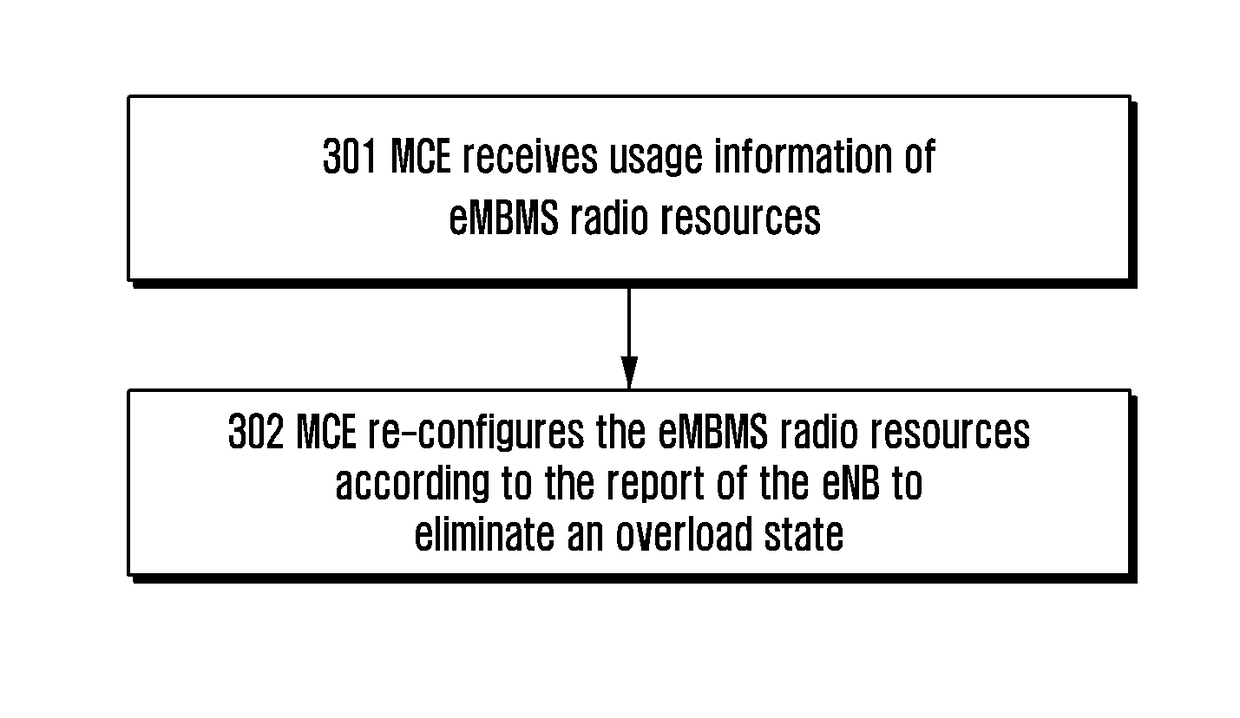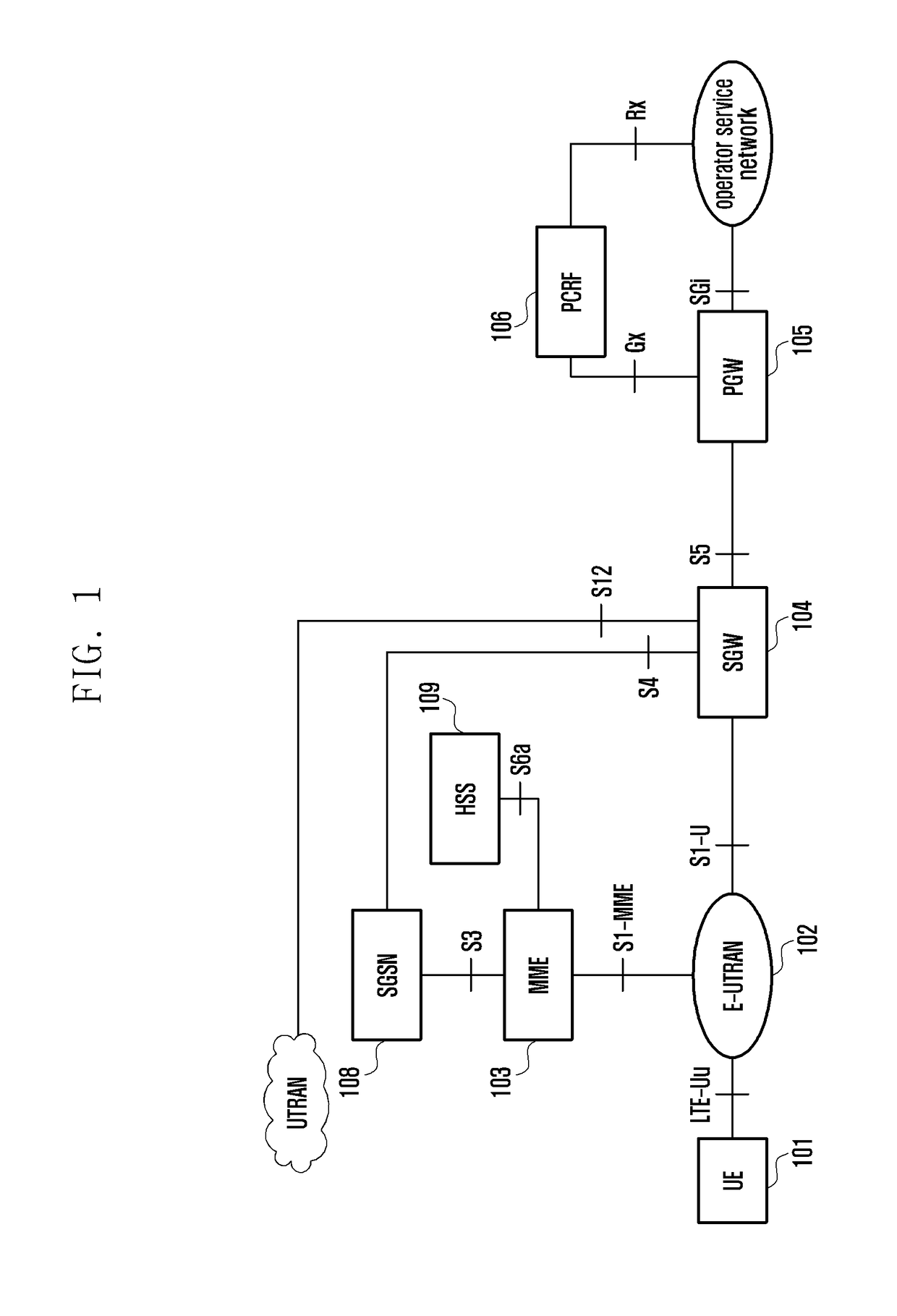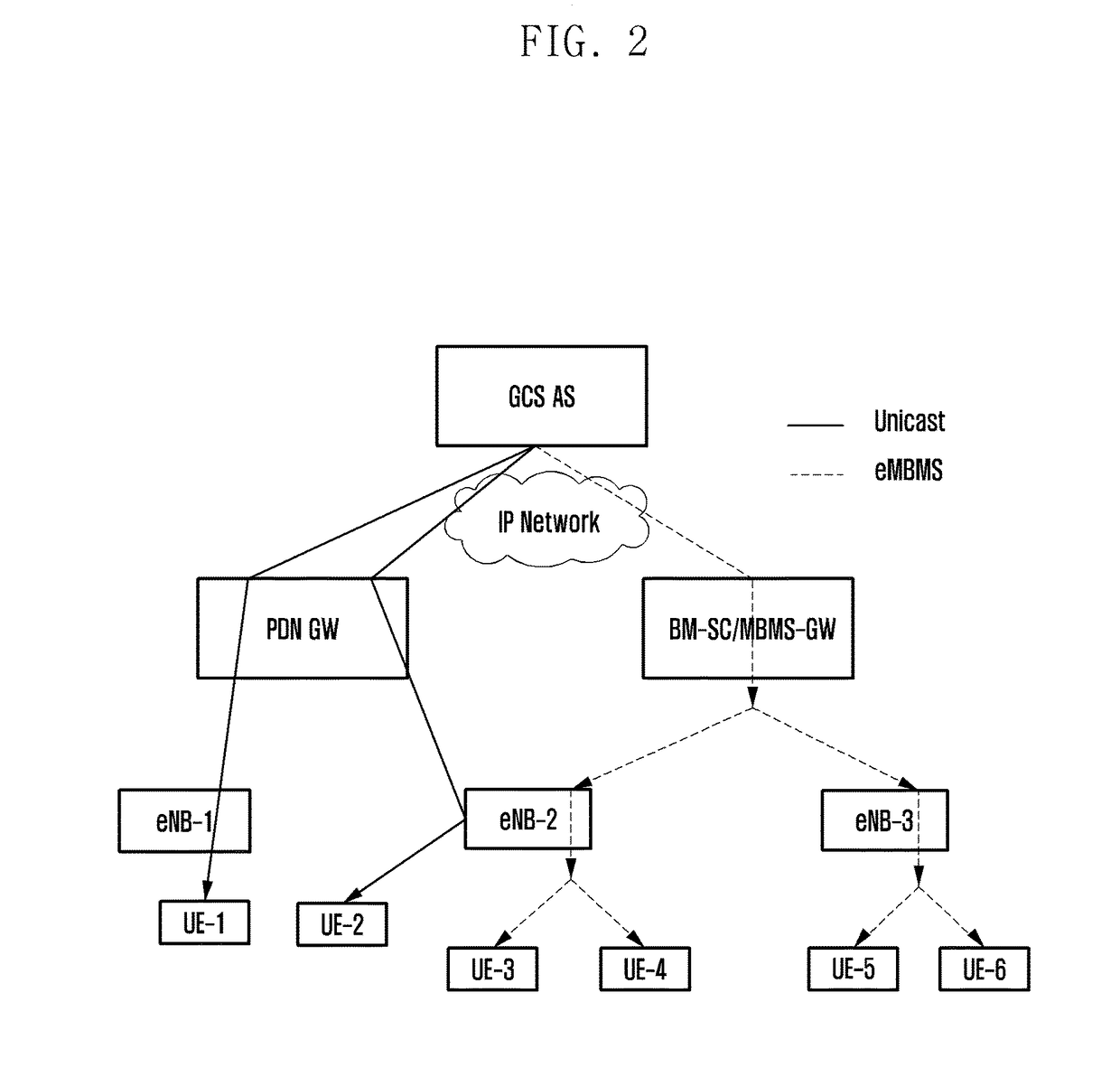Method and apparatus for radio resources management
a radio resource and management technology, applied in the field of wireless communications, can solve the problems of sudden increase in the amount of data, the time needed by the process exceeding the time required by the gcse services, and the inability of conventional embms techniques to meet requirements, so as to increase the radio resources allocated and reduce the amount of radio resources allocated
- Summary
- Abstract
- Description
- Claims
- Application Information
AI Technical Summary
Benefits of technology
Problems solved by technology
Method used
Image
Examples
example 1
[0140]In this example, the usage information of eMBMS radio resources reported by an eNB is information indicating an overload state. The eNB sends the overload information to an MCE. The MCE may send the overload information to a GCSE AS via a core network. The GCSE AS may send some of GCSE services using unicast bearers as in the method shown in FIG. 4. Alternatively, the MCE may re-allocate MBMS radio resources to eliminate the overloaded state of the eNB as in the method shown in FIG. 3. FIG. 5 is a flowchart illustrating a detailed process of example 1. The process may include the following procedures.
[0141]At block 501, an eNB report an overload indication (notification) to an MCE.
[0142]The eNB get the knowledge that radio resources corresponding to an eMBMS bearer are allocated to the eNB from a scheduling information message sent by the MCE. According to conventional mechanisms, multiple transmission channels MCH may share the radio resources, and multiple eMBMS bearers may ...
example 2
[0167]In this example, the usage information of eMBMS radio resources reported by an eNB includes actual usage condition of the eMBMS radio resources. The eNB reports the actual usage condition of the eMBMS radio resources to the MCE, and the MCE sends the actual usage condition to a GCSE AS via a core network. The GCSE AS may send some of GCSE services using unicast bearers as in the method shown in FIG. 4. Alternatively, the MCE may re-configure MBMS radio resources according to the usage information of the radio resources to eliminate the overloaded state of the eNB as in the method shown in FIG. 3. FIG. 6 is a flowchart illustrating a detailed process of example 2. The process may include the following procedures.
[0168]At block 601, an eNB reports actual usage condition of eMBMS radio resources to the MCE.
[0169]The message of block 601 may include actual usage condition of eMBMS radio resources. Radio resources are configured for an MBSFN, an eNB may cover multiple MBSFNs, and d...
example 3
[0195]In this example, the usage information of eMBMS radio resources reported by an eNB is radio resources usage information of each MCH or each TMGI within an MBSFN. The eNB reports usage information of the radio resources to the MCE, and the MCE sends the usage information to a GCSE AS via a core network. The GCSE AS may send some of GCSE services using unicast bearers as in the method shown in FIG. 4. Alternatively, the MCE may re-configure MBMS radio resources according to the usage information of the radio resources to eliminate the overloaded state of the eNB as in the method shown in FIG. 3. FIG. 7 is a flowchart illustrating a detailed process of example 3. The process may include the following procedures.
[0196]At block 701, an eNB reports usage information of an MCH to an MCE.
[0197]The message in block 701 may include an identity of an MCH and radio resources usage information of the MCH. Radio resources are configured for an MBSFN, an eNB may cover multiple MBSFNs, and di...
PUM
 Login to View More
Login to View More Abstract
Description
Claims
Application Information
 Login to View More
Login to View More - R&D
- Intellectual Property
- Life Sciences
- Materials
- Tech Scout
- Unparalleled Data Quality
- Higher Quality Content
- 60% Fewer Hallucinations
Browse by: Latest US Patents, China's latest patents, Technical Efficacy Thesaurus, Application Domain, Technology Topic, Popular Technical Reports.
© 2025 PatSnap. All rights reserved.Legal|Privacy policy|Modern Slavery Act Transparency Statement|Sitemap|About US| Contact US: help@patsnap.com



